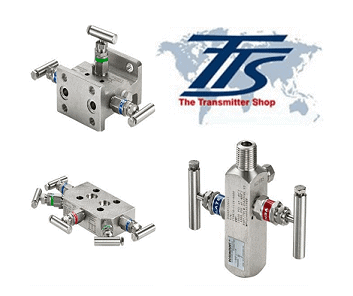How to Measure Pressure, Flow, and Level Accurately in Instrumentation Lines?
Brian Craig
July 07, 2021
Process instrumentation lines feature several instruments including process interface valves, impulse lines, manifolds, and transmitters, which are used to measure different process parameters such as flow, temperature, level, and pressure. The level of accuracy required for each of these parameters vary with each application. At times, a range of temperature or pressure is sufficient, while in some applications, exact and absolute value may be needed. The accuracy aspect and tolerances in an instrument are designed or customized accordingly. Process instrumentation has been in use since decades; however, the earlier devices were mainly mechanical. Now with technological advancements, you can have multiple functionalities in these instruments. For instance, a device such as a transmitter can measure relative as well as absolute pressure. If it finds any variations in values, it issues an alert to the connected computer or smartphone. Transmitters are an important part of this instrumentation. However, the entire loop and connectivity among these devices is just as important. So, instrument manifolds are used. This post discusses some ways or techniques for accurate pressure, flow, and level measurement in a process.

Factors to Consider for Accurate Measurements
Here are some factors which may be helpful when setting up an instrumentation loop to get accurate readings.
- As mentioned, transmitters are a crucial device as they measure the parameters such as pressure, flow, and so on, and offer output. However, for them to function well and offer the correct readings, the entire setup must be in a loop.
- It is essential that each part in the setup functions accurately, and offers the right output to the transmitter.
- Safety and required accuracy of the applications are two important aspects to be looked into. This is especially crucial as pressure or temperature may at times exceed limits. Here is where the alerts issued help. In fact, you can opt for systems which auto control these parameters if they exceed beyond limits. This helps avoid mishaps and safeguards the operators as well as the process setup.
- Periodic inspection of the entire loop is highly recommended, and this can be done without disturbing the ongoing process.
- For a system to run smoothly, operators and technicians must have a good understanding of all the valves, manifolds, and devices, in terms of design and working.
- Valves in these setups are of various types, such as process interface valve (PIV), bleeding valve, isolation valve, and so on.
- Manifolds are versatile devices which offer multiple valve connectivity, and hence help reduce the number of total valves. These can be mounted onto a transmitter. Manifolds are designed to work in harsh conditions prevalent in oil & gas, chemicals, and alike sectors. With a manifold, you can keep one valve shut during the process, which helps the transmitter offer accurate outputs. Manifolds in general prevent leakages and make the system compact and relatively simple. Also, it can be fitted in small areas.
- Choosing the right manifold instead of too many valves goes a long way in making the entire system efficient and accurate. Talk to your supplier to figure out the right type of manifold for your system.
- Standardization and documentation are two aspects which make the entire system efficient and easy to understand. So, the components in the loop must be designed following set standards and calibration. This reduces cost, complications, and frequent repairs. The same must be documented for future references.
If you are looking for instrument manifolds or any type of transmitters, ensure you source them from a reliable supplier. The Transmitter Shop (TTS), has robust sales and technical teams, and is one of the leading suppliers of a variety of transmitters, manifolds, control valves, and so on. The company also offers calibration services using SI-traceable units.
- Steam Boiler Drum Level Measurement A Comparison of Control System Technologies
- Furnace Flame Sensor Faults Everything You Need to Know for Safe Operation
- Comparison between Multi Valve Manifolds Block Valves and Bleed Valves
- Understanding Electrochemical Detection: Principles, Techniques and Environmental Application
- How Can Greenhouse Gas Emissions Be Reduced?
- Furnace Flame Sensor Faults Everything You Need to Know for Safe Operation
- Understanding Electrochemical Detection: Principles, Techniques and Environmental Application
- How Can Greenhouse Gas Emissions Be Reduced?
- Pneumatic Pressure Controllers: A Safe Choice for Hazardous Areas
- A Practical Guide to Vacuum Measurement and Operation
QUICK ENQUIRY







